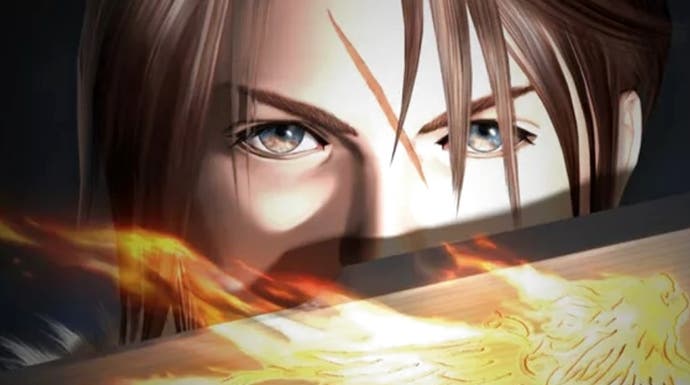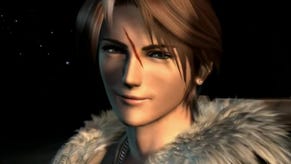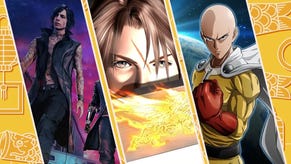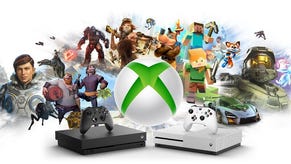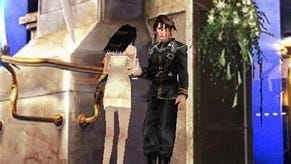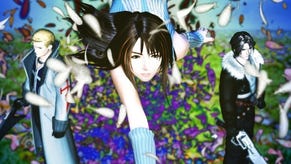Final Fantasy 8 Remastered: the upgrades are sparse but the game still shines
Selphie stick.
How apt that in the week that Eurogamer itself celebrates its 20th birthday, a remaster should appear for one of 1999's finest console releases. With Final Fantasy 8 Remastered, the hope is to get the definitive edition for PS4, Xbox One, PC and Switch. Two decades on from its original launch, it's conspicuous in being the last FF of that era to get any form of HD treatment - and when you see the remaster in action, it's clear why. As much as this new version takes steps in the right direction, there are points which are - sadly - a step back from the PlayStation original.
It's a shame because Final Fantasy 8 was a landmark release, taking the technological triumphs of FF7 and significantly building upon them. The beautiful video sequences returned, for example, but this time pre-rendered scenes integrated more closely with what was then state-of-the-art 3D modeling. It's an idea that FF7 toyed with at points, but it's used far more extensively in its sequel to give a suitably cinematic presentation. The Dorrit mission for example, was used to demo the game ahead of release - an incredible set piece involving a mech crab chasing Squall through the streets. It meant we got visuals far beyond what PS1 hardware could ever realistically achieve in real time - by virtue of sheer brute force, filling four CDs with pre-rendered video sequences.
This combination of FMV and real-time 3D was an incredible feat of technology for its day, but Squaresoft pushed out the boat in many other ways, too. The score used higher quality sampling on PS1, with a focus on recorded vocal tracks. The engine also ran with higher-polygon character models for the main cast - meaning that Squall, Rinoa and Seifer appear in battle with the same model as the game's traversal segments. Also, the large, intruding battle window of FF7 - which took up a good chunk of the screen's lower half - is removed. Instead the entire frame shows the 3D action, overlayed with a transparent HUD for HP. Going from one to the other in the late 90s, it's a huge improvement.
It's a game ripe for remastering, but unfortunately, the end result is far from ideal. That's not to say that there aren't positives, however. The way I see it, there are three big advantages in playing the remaster, the first being that all character and enemy models get an HD reworking. The new designs for Squall, the guardian force summons, and everything in-between look clean, and far easier on the eye. It's more consistent with the FMV versions of the characters in this sense, and that's a good thing. In fact you'll catch details that were easy to miss otherwise; the stitching on clothes or the scar on Squall's face.
Secondly, we have the boosters. With a click of the analogue sticks you can speed the game up by 3x, turn off random encounters, or even increase HP and limit breaks. On the surface, it's a bit of a cheat, but it's become a routine extra for Final Fantasy remasters - even FF12 - to help with the grind of long dungeons. Often you'll have settled on an attack pattern that just needs repeating over and over, so the 3x speed-up is especially great for blitzing through the repetition. It's a big plus point over the original game, and gets you to the heart of what makes these games fun.
Resolution is the third point. The original game's 320x240 with classic PS1 colour depth dithering is in full effect, while the remaster delivers a native 1920x1080 (even on PS4 Pro!). We weren't sent Xbox or Switch versions, but it's not difficult to imagine that these are locked to full HD too. Still, 1080p benefits anything rendered in real-time 3D - from the characters to the battle sequences, and the world map. Plus, the remaster also removes dithering artefacts for a much cleaner picture, though we're still locked to a 4:3 aspect ratio.
The main problem is that all of the original backdrops and cut-scenes are still of a low quality, with only a smoothing filter added. The situation improves tremendously with the FMV sequences, which are far crisper and cleaner, but the jarring disparity between low resolution, blurry backgrounds and pristine 1080p 3D rendering just doesn't work. Machine learning upscaling is transforming the low res 2D bitmaps of yesteryear in many homebrew texture packs and I can't help but think that a similar approach here may have paid dividends.
Meanwhile, the 3D aspects have issues too in that much of the core asset work is still based on 20-year-old artwork. Take the world map, for example. It's entirely rendered in 3D, and the upgrade delivered via full HD resolution and actual texture filtering is tremendous. However, the textures themselves simply don't have the clarity to work - perhaps not surprising when they are being asked to service a 20 times increase in resolution. As the developers swapped out the character models for higher quality versions, it's a shame that the world map, at least, didn't see similar treatment. It sticks out like a sore thumb - with terrible alignment between texture maps.
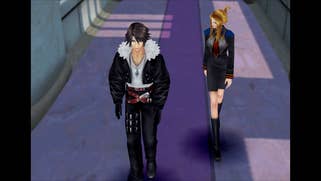
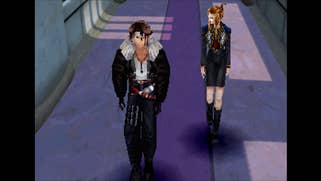
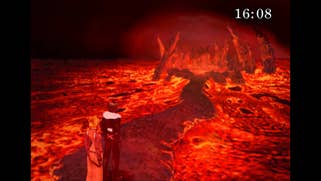


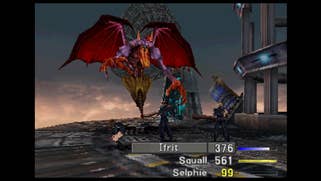
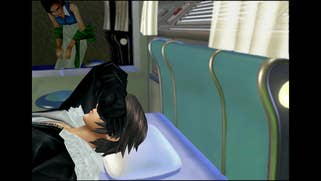
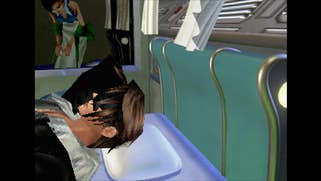
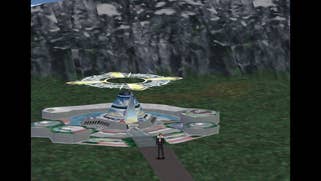




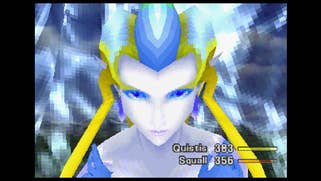
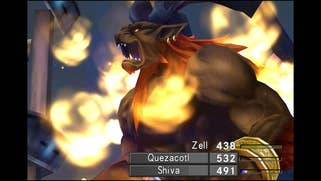
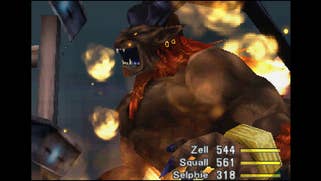
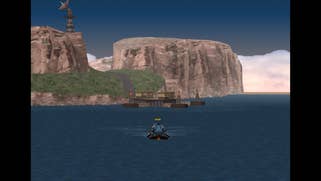
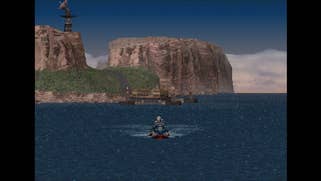
We can fairly assume the developers didn't have the original source artwork, which may have been created originally at a higher resolution. This means that re-rendering with a full 1080p target wasn't an option - instead it's relying on assets plucked straight from PS1 or PC versions of the day. Indeed, based on early impressions of the remaster on PC, evidence suggests that all consoles are running a decompiled version of the original PC edition released in 2000 - possibly with some kind of x86 emulator. This may explain why the new release shares many of the more disappointing quirks of the original PC port, which compare unfavourably with the PS1 version.
Firstly, there are no analogue controls. It's just like the PC version in that regard, which relied on keyboard arrow keys - giving you only eight directions of movement, even if you're using PS4's analogue sticks. The PS1 version gave you fine, 360 degree gradients of control on the analogue controller. It meant it was much, much easier to line up to an NPC and talk to them or to use draw points. As it is here though, you end up walking around like a robot. Equally, rumble is entirely missing from this version and so you don't get any feedback during Squall's limit breaks. In some respects, maybe just emulating the PS1 version would have given us a better time here.
Performance is something worth touching on. For context, the PS1 had a very unique setup with its Final Fantasy games. It was the early days of 3D on console and this meant that 30fps really was a luxury - and you often accepted even lower performance as a compromise in getting cutting edge visuals. For a game pushing the envelope as much as FF8, that meant running with hard frame-rate caps based on the situation. So, for example, you get 30fps for traversal on the world map or towns but battle scenes are capped at 15fps. Obviously, since the action's turn-based in nature, it never affects the strategic element. The key aspect here is that the menus running over the top ran at 60fps on PS1, which meant the limit break indicators panned smoothly across the screen.
Performance is arguably worse in the remaster. The hard frame-rate ceiling still works as before; it runs at 30fps while travelling around, and there's no real push to anything higher. In battle though, there's a subtle change - a 16fps cap on the 3D rendered parts of the screen - 1fps higher than PS1. The twist here is that menus no longer run at 60fps, but sync up to the 3D action. Supposing you're in battle, menus update in sync at 16fps, along with the gameplay - and unfortunately, this does affect playability. Limit attacks like Squall's Renzokuken rely on timing an R1 press to a set rhythm, where now you have only a quarter of the visual feedback to work with. If you notice added input delay on menus in this remaster, this is part of the reason why: 60fps is now 16fps.
Despite its many issues, Final Fantasy 8 remains an incredible game to play today - but the notion that this remaster delivers an across-the-board upgrade is debatable at best. The frame-rate can be worse than PS1, we're missing analogue controls, rumble support is gone and the visual upgrade isn't consistent. The main advantage of playing this remaster is the boosters - and the upgraded models, which are nice additions. Thankfully, the beautiful art direction and soundtrack hold up really well, despite the limitations. The triple triad card mini-game is as addictive as ever, and in terms of world building, it's full of charming details that add considerably to the greater whole.
Technically, Final Fantasy 8 was clearly a pioneering effort for its use of animated backdrops. Its video elements combined effectively with in-engine modeling, at a time when console 3D was still very much in its infancy. For all the flaws of this remaster then, it's worth checking out just to see how Squaresoft pushed PS1 technology still further after the game-changing FF7. This isn't a perfect remaster then - not by any means - and it's really frustrating that we can't have it all in one package. As a project that's been a long time in gestation though, we do at least have a better idea of the challenges Square Enix faced to make it happen at all. If - and only if - you can accept all the shortcomings we've covered here, the remaster does give an easy way to play one of the biggest budget JRPGs of its era, but to be honest, I expected more.
